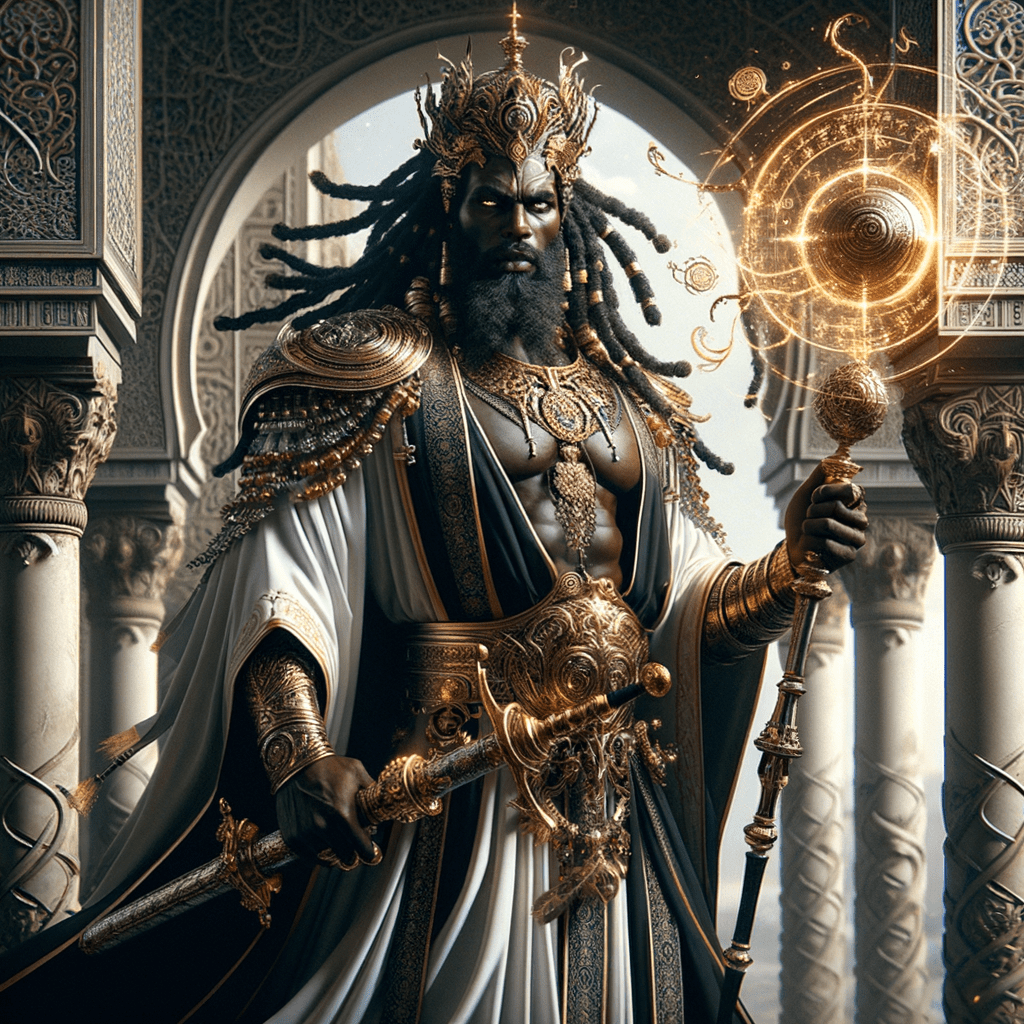
Introduction: From Ancient Empires to Modern Gatekeepers
The relationship between ancient priests and rulers—kings, pharaohs, and emperors. Was complex and deeply interwoven with power, control, and mysticism.
In many cases, the priesthood exerted significant control over the rulers. Often positioning themselves as the ultimate arbiters of divine will and cosmic order.
To understand the raw and unfiltered truth of their influence. We must delve into the mechanisms of control. The deep secrets they guarded, and the esoteric knowledge passed through the mystery schools.
Today, their legacy lives on, as the “priests” of modern society wear many faces and wield influence over the global order in ways both visible and unseen.
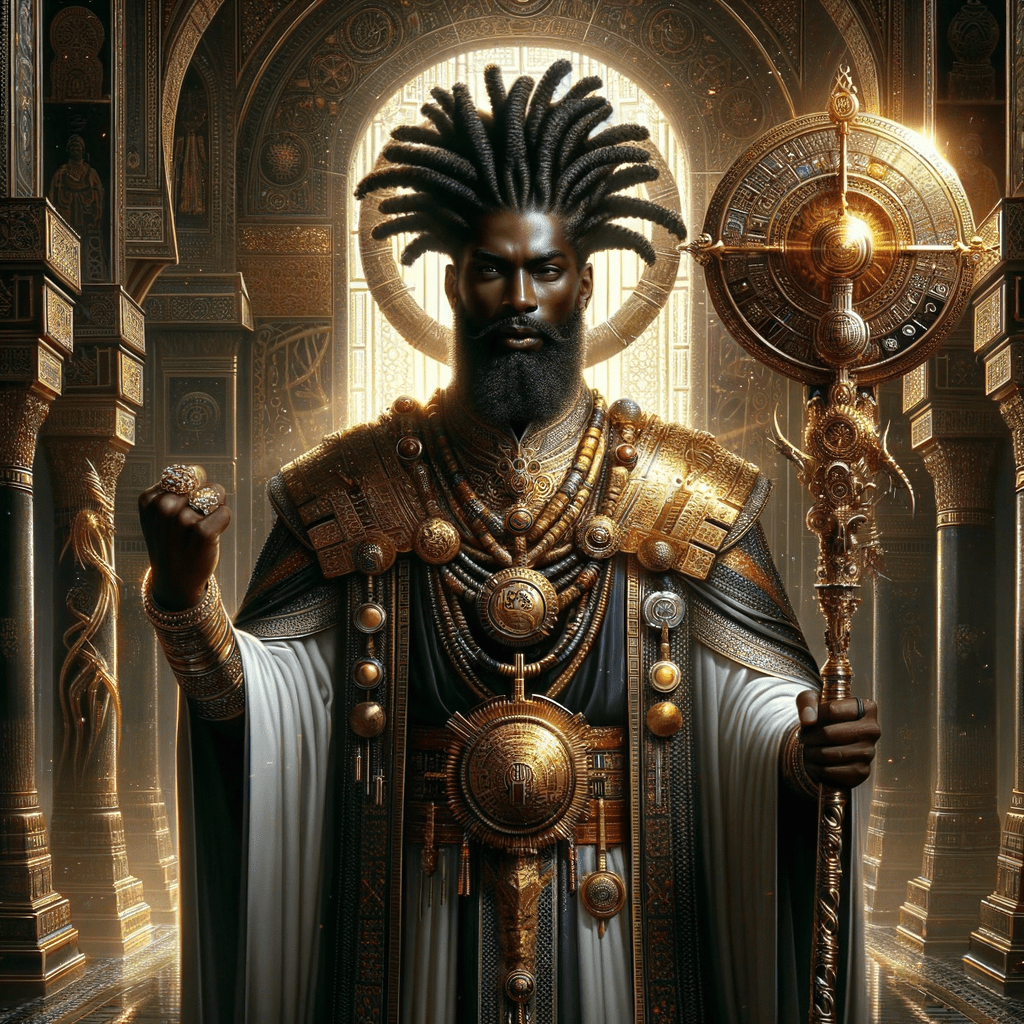
Did Priests Control Kings, Pharaohs, and Emperors?
The power dynamic between priests and rulers in ancient times was intricate and profound. With priests often positioning themselves as indispensable advisors and gatekeepers of divine will.
In many civilizations, priests operated not only as religious leaders but also as policymakers, scientists, and strategists.
Their control stemmed from their ability to legitimize rulers through religious rituals. Manage vast economic resources, and wield esoteric knowledge that bridged the physical and metaphysical realms.
Theocracy and Divine Authority:
God-Kings and Priestly Validation: In ancient Egypt, for example, the pharaoh was deemed a living god. Yet his divine status relied on priestly endorsement. Priests performed essential rituals, maintained sacred spaces, and proclaimed the ruler’s connection to the gods. Ensuring his political and spiritual dominance.
Example: The high priests of Amun amassed so much power during the New Kingdom that they became de facto rulers. Controlling temple estates that rivaled the wealth of the pharaoh himself.
Control Through Knowledge:
Guardians of Cosmic Order: Priests were stewards of advanced knowledge, including astronomy, mathematics, and agricultural cycles. They predicted celestial events like eclipses or the flooding of the Nile, which were seen as divine phenomena. This “divine insight” solidified their role as indispensable advisors to rulers.
Example: Mayan priests, using precise calendrical systems, orchestrated rituals that reinforced the ruler’s authority by aligning governance with cosmic events.
Psychological Manipulation:
Fear of Divine Wrath: Acting as intermediaries between mortals and gods. Priests interpreted natural disasters or plagues as signs of divine displeasure. This enabled them to influence or even undermine rulers, leveraging their perceived spiritual authority.
Example: In Mesopotamia, priests could declare a king unfit. Often orchestrating his removal if he was deemed to have lost divine favor.
Economic Power:
Temple Wealth: Temples were not only religious centers but also economic hubs, controlling vast lands, labor, and wealth. Priests managed these resources with precision, often wielding greater financial power than the rulers themselves.
Example: The Brahmins in India controlled societal laws and advised rulers, blending spiritual authority with economic and political influence. Their control of sacred texts and rituals placed them at the apex of the social hierarchy.
By intertwining religious authority with economic and intellectual control. Priests established themselves as indispensable to the governance of ancient empires.
Their ability to bridge the earthly and divine realms made them some of the most powerful figures in history.
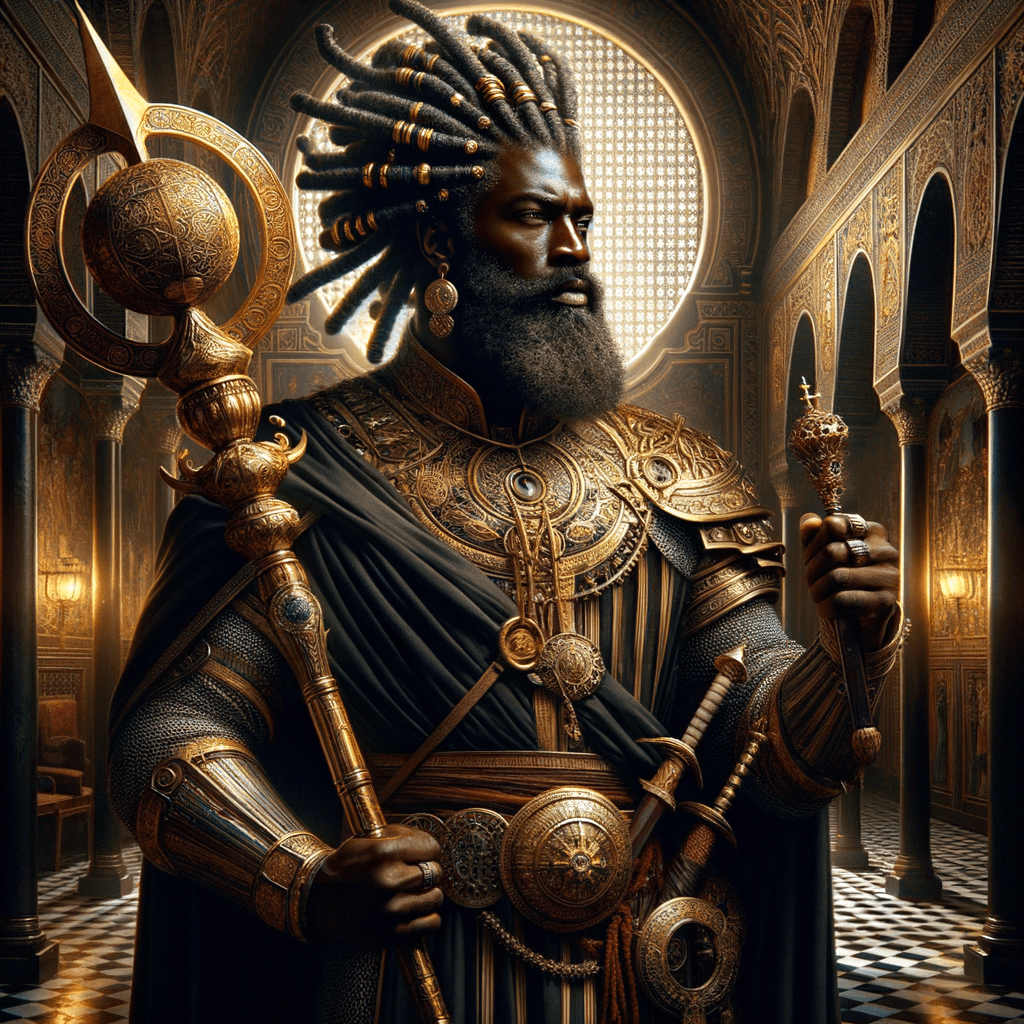
Deep Secrets of the Priesthood
The priesthood was not just a religious institution but a repository of advanced scientific, metaphysical, and strategic knowledge that allowed them to wield immense power.
Their secrets extended beyond rituals and ceremonies, shaping the foundations of governance, economics, and even warfare in ancient empires.
Esoteric Knowledge of the Cosmos:
Sacred Geometry and Astronomy: Priests possessed an intricate understanding of geometry and celestial mechanics. Which they encoded into architectural marvels like temples, pyramids, and ziggurats. These structures were often aligned with celestial bodies to capture cosmic energy and reflect divine order.
Example: The Great Pyramid of Giza is not only aligned with Orion’s Belt. But also incorporates mathematical constants like pi and phi, symbolizing an advanced grasp of universal principles.
Calendrical Mastery: Many ancient priesthoods developed sophisticated calendars that regulated societal life, from agricultural cycles to ritual events. These calendars often included predictive capabilities for eclipses and planetary movements, further cementing their perceived divine insight.
Alchemy and Immortality:
Physical and Spiritual Transformation: Priests were believed to hold the keys to alchemy. A discipline that transcended the transmutation of metals and delved into the refinement of the soul. They preserved methods for attaining spiritual enlightenment and possibly extending life.
Example: In Egyptian traditions, priests utilized the Book of Thoth. A legendary compendium of magical knowledge, to achieve mastery over life, death, and the afterlife.
Elixirs and Ritual Potions: Priests were adept at creating potions that could heal or harm. Granting them control over life and death. These practices formed the early foundations of pharmacology.
Example: Taoist priests in ancient China pursued the “elixir of immortality,” combining herbal medicine with esoteric alchemical principles.
Control of Life and Death:
Healing and Herbal Mastery: Ancient priests were unparalleled in their understanding of medicinal plants and holistic healing. Their dual role as healers and poisoners gave them an unmatched influence over rulers and rivals.
Example: The Druids of Celtic societies were both spiritual leaders and master herbalists. Feared and revered for their ability to heal or curse.
Ritual Sacrifices: Priests often orchestrated human or animal sacrifices, believed to appease deities and maintain cosmic balance. These acts also served as displays of their power over life and death.
Energy Manipulation:
Harnessing Sound and Frequency: Priests were aware of the vibrational nature of reality. Using sound to heal, alter states of consciousness, and invoke divine forces. Chanting, drumming, and the use of sacred instruments were central to their rituals.
Example: Tibetan monks still use singing bowls to produce resonant frequencies believed to align the mind and body with universal energy.
Electromagnetic Knowledge: Some suggest that priests understood the manipulation of natural electromagnetic forces. Using materials like quartz and gold in their sacred sites to amplify energy fields.
Strategic Secrecy and Psychological Power:
- Guardians of Forbidden Knowledge: Priests maintained strict hierarchies within their ranks. Ensuring that esoteric wisdom was only accessible to the initiated. This created an aura of mystery and untouchable authority.
- Manipulation Through Fear: By interpreting natural disasters, celestial events, or societal upheavals as divine signs, priests manipulated rulers and the masses into submission. Fear of divine wrath often ensured compliance with their decrees.
The secrets held by ancient priests were far-reaching, encompassing physical sciences, metaphysical principles, and strategies for maintaining control.
Their blend of wisdom and mystique allowed them to guide, or in some cases dominate, the rulers and societies they served.

The Ancient Mystery Schools
The Mystery Schools were the sanctuaries of secret knowledge. Serving as the breeding ground for spiritual, intellectual, and even political leaders.
Their purpose extended far beyond mere religious instruction—they were institutions where the most advanced teachings of the time were preserved, refined, and passed on to carefully chosen initiates.
Purpose of Mystery Schools:
- To safeguard sacred knowledge from misuse by the uninitiated. Protecting esoteric wisdom from falling into hands that might exploit it for destructive purposes.
- To train leaders, priests, and select individuals in the arts of rulership, philosophy, and spiritual ascension.
- To unlock the latent potential within humans, teaching them how to achieve mastery over themselves, nature, and the metaphysical realms.
- To act as the custodians of higher knowledge, bridging the gap between divine truths and human understanding.
Key Mystery Schools
Egyptian Mystery Schools:
These schools revolved around the concept of Ma’at (cosmic order), emphasizing balance, justice, and harmony. Initiates spent decades mastering sacred texts, rituals, and spiritual disciplines to achieve both material and spiritual immortality.
Teachings: Initiates learned sacred geometry, astrology, and the preservation of the ka (spiritual essence), delving deeply into the secrets of the afterlife as outlined in texts like the Book of the Dead.
Notable Practices: Symbolic “death and rebirth” rituals were conducted within the Great Pyramid. Where initiates faced trials that tested their courage, discipline, and understanding of universal truths.
Greek Mysteries:
Eleusinian Mysteries: Focused on the myth of Demeter and Persephone. These rites symbolized death, rebirth, and the cycle of life. Participants underwent transformative experiences designed to awaken spiritual insight and connection to divine forces.
Orphic Mysteries: Rooted in Orpheus’ teachings, these mysteries emphasized purification, ascension through music and poetry, and a profound understanding of the soul’s journey.
Babylonian Mysteries:
The priests of Babylon developed an unparalleled understanding of astronomy and mathematics. They used this knowledge to predict celestial events and maintain their authority over rulers and society.
Teachings: The Babylonian schools trained initiates in astrology, divination, and the symbolic interpretation of natural events to align human action with divine will.
Indian Mysteries:
The Vedic traditions formed the backbone of Indian mystery teachings, encompassing deep esoteric insights into meditation, yoga, and the manipulation of prana (life energy) to achieve enlightenment.
Core Texts: The Upanishads and Bhagavad Gita served as philosophical guides, exploring the nature of reality, the interconnectedness of existence, and pathways to transcendence.
Practices: Through mantras, ritual sacrifices (yajnas), and ascetic disciplines, initiates sought unity with the divine.
Mesoamerican Mysteries:
The Mayan and Aztec priesthoods were steeped in the study of time, as encoded in their intricate calendars. These schools taught initiates to maintain cosmic balance through blood sacrifices, elaborate rituals, and celestial alignments.
Codices and Glyphs: Knowledge was encoded in sacred books and symbols, accessible only to those initiated into their interpretation.
Initiation Rites:
Trial by Ordeal: Initiates faced physical and psychological challenges designed to test their resilience, discipline, and readiness to receive esoteric knowledge. These trials often symbolized a “death” to their old self and a “rebirth” into higher understanding.
Fasting and Isolation: Prolonged periods of solitude and deprivation were used to heighten spiritual awareness and break attachment to the material world.
Symbolic Secrecy: Upon passing their trials, initiates swore oaths of secrecy, with betrayal often punishable by exile or death. These measures preserved the sanctity and power of the teachings.
Teachings Passed Down:
Universal Laws: Mystery schools emphasized principles like the Law of Correspondence (“As above, so below”). Teaching students how the macrocosm (universe) and microcosm (individual) are interconnected.
Sacred Language and Symbols: Mastery of hieroglyphs, mantras, and symbolic systems allowed initiates to access and manipulate higher energies.
Alchemy and Transformation: From the transmutation of metals to spiritual enlightenment. The schools taught the process of refining base elements—whether material or personal—into their highest form.
Astral Travel and Inner Vision: Initiates were trained to access other dimensions through meditation, dreams, and sacred rituals. Bridging the material and spiritual realms.
The Mystery Schools represented the pinnacle of ancient wisdom and spiritual training.
By controlling access to this sacred knowledge. The priesthood ensured their enduring influence over society and shaped the foundations of many civilizations.
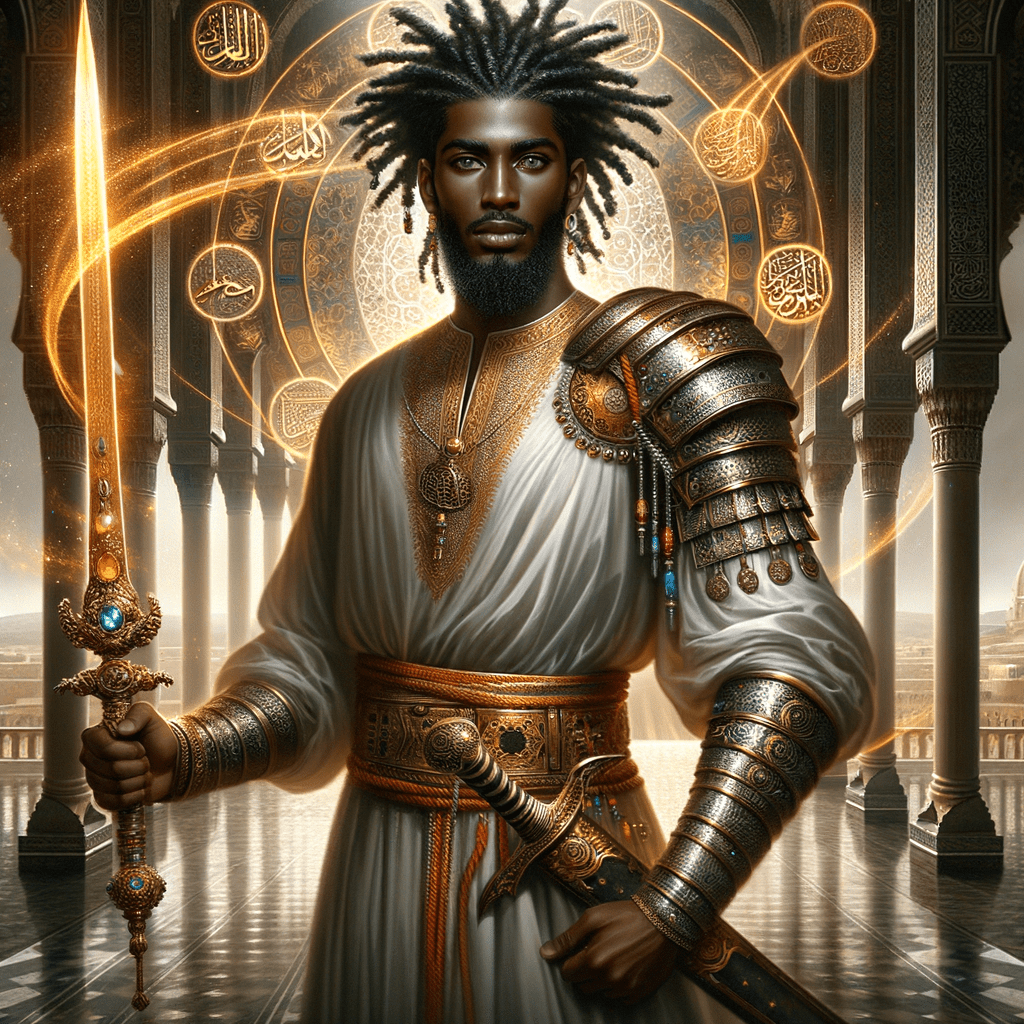
Secret Ancient Magic and Rituals
The priesthood wielded magic not as superstition but as a science deeply rooted in their understanding of nature and the divine.
Magic was an intricate combination of ritual, symbolism, and knowledge. Aimed at harnessing universal forces to achieve tangible and metaphysical results.
Types of Magic
Invocation of Deities:
Priests acted as intermediaries between the divine and mortal realms. Through specific chants, offerings, and sacred symbols, they summoned gods and goddesses to gain favor, guidance, or power. These rituals often involved the burning of incense, precise hand gestures, and offerings of food, gold, or symbolic objects.
Example: In ancient Egypt, priests performed daily invocations in temple sanctuaries. Awakening the gods’ presence within sacred statues.
Protection and Warding:
Amulets, talismans, and protective spells were integral to the priesthood’s magical repertoire. These items were believed to shield individuals, rulers, or entire cities from harm, illness, or spiritual attack. Protective rituals often included drawing sacred circles, using salt or herbs, and reciting powerful incantations.
Example: The Ankh symbol was worn or placed in tombs to ensure protection and eternal life for the deceased.
Necromancy:
The practice of communicating with the dead, necromancy was used by priests to gain wisdom from ancestors or spirits. These rituals were often performed at night. In sacred spaces like tombs or ceremonial chambers, and involved offerings, blood sacrifices, or sacred chants.
Example: The Oracles of Delphi in ancient Greece were said to commune with the spirit of Apollo to deliver prophecies.
Weather Control:
Through specific rituals and offerings, priests sought to summon rain, avert storms, or ensure favorable conditions for agriculture. This form of magic was particularly vital in societies dependent on seasonal cycles.
Example: In Mesopotamia, priests conducted elaborate water rituals to appease Ea, the god of water, and maintain irrigation flows.
The Use of Symbols:
Symbols were central to magical practices, acting as conduits for cosmic forces and focusing energy during rituals:
- Ankh (Life): Represented eternal life and was used in rituals to ensure vitality and immortality.
- Eye of Horus (Protection): Symbolized divine protection and healing. Often painted or carved into structures, amulets, or scrolls.
- Sacred Geometry: Patterns like circles, triangles, and spirals were employed to represent universal principles and direct energy flows.
- Runes and Glyphs: Priests inscribed powerful symbols on tools, weapons, and sacred objects to imbue them with magical properties.
Magical Practices
Sound and Frequency:
Priests utilized sound to influence the physical and spiritual realms. Chants, hymns, and instruments like drums or flutes created vibrations believed to harmonize with divine energies. Specific tones were thought to heal the body, clear negative energy, or open portals to other dimensions.
Example: Tibetan monks’ use of throat singing and singing bowls demonstrates an ancient understanding of sound frequencies.
Fire and Light Rituals:
Fire was seen as a transformative element, capable of purifying, illuminating, and connecting the mortal world to the divine. Priests performed fire rituals during solstices, eclipses, or funerary ceremonies to signify renewal and transcendence.
Example: The Zoroastrian priests maintained eternal flames in temples to honor Ahura Mazda, the god of light and wisdom.
Healing Magic:
Healing rites combined herbal medicine, chants, and spiritual energy to treat physical and emotional ailments. Priests were often viewed as the ultimate healers, blending science and spirituality.
Example: Ayurvedic priests in India used herbs like turmeric and neem along with mantras to restore balance in the body.
Divination:
Through tools such as oracle bones, astrology charts, or water scrying. Priests interpreted the will of the gods and foretold future events. This practice not only guided rulers but also reinforced the priesthood’s authority.
Example: Babylonian priests used the movements of planets and stars to predict events and advise kings.
Sexual Rituals and Fertility Magic:
In many cultures, priests engaged in sexual rituals symbolizing the union of divine forces. These acts were believed to promote fertility, prosperity, and cosmic balance.
Sacred Sexuality: Temples often employed rituals where sexual acts were performed as offerings to fertility gods or goddesses.
Example: In Sumer, sacred marriage rites between the king and a priestess symbolized the union of the god Dumuzi and the goddess Inanna.
Fertility Charms: Priests crafted talismans and conducted rituals to bless crops, livestock, and families with abundance.
Magic and rituals served as the linchpin of priestly power, intertwining divine, natural, and human realms.
The priesthood’s mastery of these practices solidified their roles as both spiritual leaders and societal architects. Leaving a legacy that continues to resonate in esoteric traditions today.
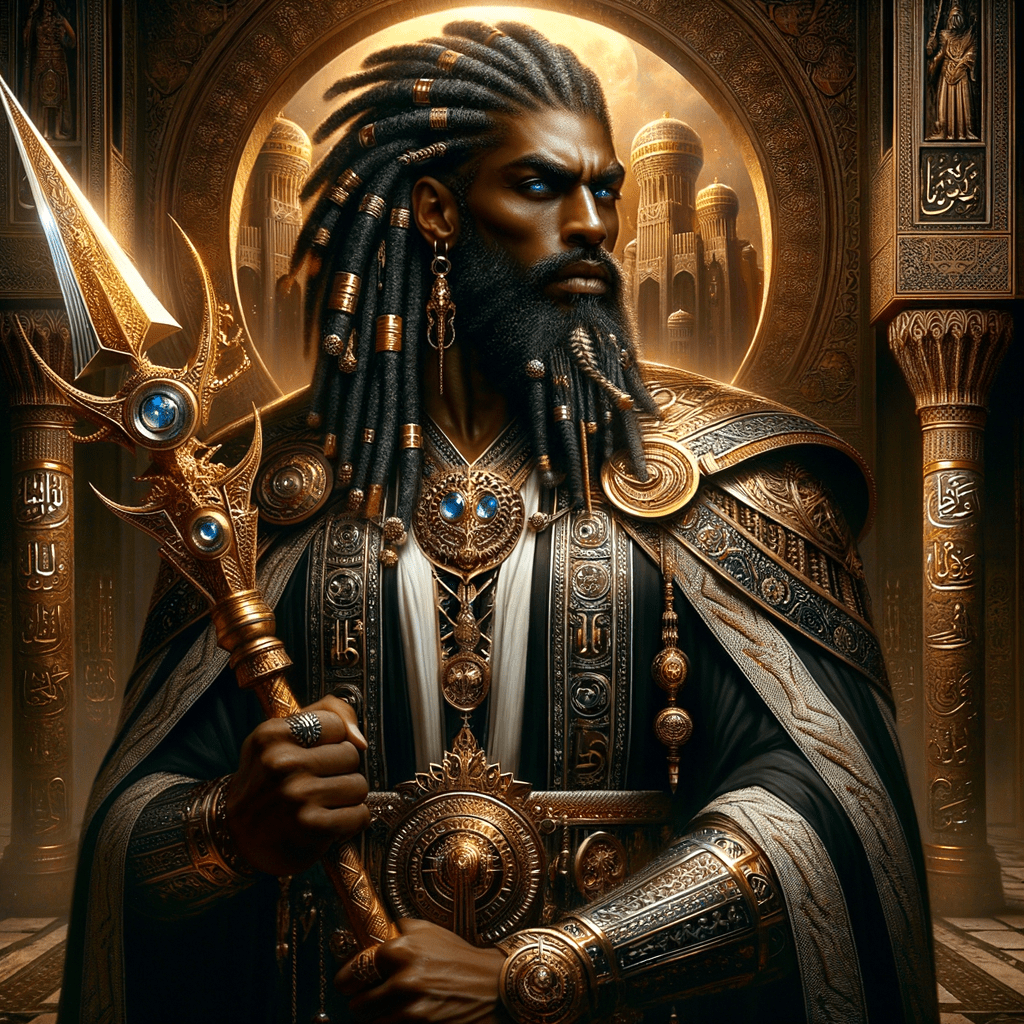
Power Over the Masses
Priests maintained control over the masses through a combination of psychological, spiritual, and social strategies. Ensuring their authority remained unchallenged and deeply entrenched.
Their methods were sophisticated and multifaceted, blending mysticism with pragmatic power plays.
Mystification:
Complex Rituals: Priests conducted intricate ceremonies and rites that were incomprehensible to the average person. These rituals, often veiled in secrecy. Enhanced their mystique and positioned them as indispensable intermediaries between the divine and the mortal realms.
Example: In ancient Egypt, only priests could enter the innermost sanctuaries of temples. Where they performed daily rituals believed to sustain the gods and maintain cosmic order.
Esoteric Doctrine: Sacred texts and teachings were deliberately cryptic, accessible only to initiates. This ensured that the knowledge of divine laws and cosmic principles remained exclusive. Further solidifying the priesthood’s dominance.
Moral Authority:
Arbiters of Right and Wrong: Priests dictated societal norms by framing them as divine mandates. They were seen as the ultimate moral authority, often advising rulers on issues of justice, warfare, and governance.
Example: The Brahmins of India codified laws in the Manusmriti, shaping the social hierarchy and ethical framework of the society.
Sanctification of Power: By performing coronation rites and blessings. Priests legitimized the rule of kings and emperors, intertwining their authority with divine will.
Fear and Hope:
Promise of the Afterlife: Priests held the keys to the afterlife. Offering salvation and eternal rewards to the obedient while warning of divine punishment for dissenters. This dual promise of hope and fear kept the populace compliant.
Example: The Egyptian “Weighing of the Heart” ceremony determined a soul’s fate in the afterlife. A process controlled and interpreted by the priesthood.
Interpretation of Natural Events: Droughts, plagues, and other disasters were framed as signs of divine displeasure. Priests offered rituals and sacrifices as the only means of appeasement, reinforcing their necessity.
Economic Control:
Monopolization of Resources: Temples often served as banks and granaries, controlling vast economic resources. The priesthood’s management of these assets gave them direct influence over the survival and prosperity of the masses.
Example: Mesopotamian temples owned large tracts of arable land and employed a significant portion of the population in their service.
Tributes and Offerings: People were required to provide offerings to the gods through the temple. Ensuring a steady flow of wealth and resources to the priesthood.
Social Engineering:
- Education and Indoctrination: Priests controlled the education system, instilling their doctrines into young minds. By shaping the belief systems of future generations, they maintained societal stability and obedience.
- Festivals and Public Rituals: Large-scale public ceremonies fostered a sense of unity and dependence on the priesthood. These events also served as opportunities to display their power and reinforce their connection to the divine.
By mastering these methods, ancient priests maintained an unassailable grip on their societies.
Their ability to blend fear, hope, and mysticism with tangible economic and social control ensured their influence remained unparalleled for millennia.

The Priests of Today
In modern times, the priesthood has evolved into various forms. Often wearing different “masks” while fulfilling the same functions of control, influence, and gatekeeping.
While they no longer reside in temples or lead rituals in the traditional sense. Their power is pervasive, manifesting in politics, technology, finance, media, and culture.
Key Figures and Institutions
Religious Leaders:
Figures like the Pope, Grand Ayatollahs, Rabbis, and Imams maintain spiritual and moral authority over millions. They influence societal norms and political policies while commanding vast networks of institutions and resources.
Example: The Vatican’s immense financial holdings and global political influence make the Pope one of the most powerful religious figures in the modern world.
Corporate Technocrats:
Leaders of Big Tech corporations, such as Elon Musk, Sundar Pichai, and Mark Zuckerberg, act as “high priests” of the digital age. They shape how society interacts with technology and even how we think, through algorithms and digital platforms.
Example: Google’s control over information dissemination and artificial intelligence development gives its leaders unprecedented influence over global knowledge.
Media Moguls:
Individuals like Rupert Murdoch, and Jeff Bezos control vast swathes of the media landscape. Crafting narratives that influence public opinion, elections, and cultural trends.
Example: Media conglomerates dictate what stories are amplified or suppressed, shaping societal consciousness and historical memory.
Financial Elites:
Central bankers, hedge fund managers, and global financiers act as modern gatekeepers of wealth and economic systems. Institutions like the Federal Reserve, IMF, and World Bank wield significant control over national economies.
Example: Jerome Powell’s policies as Chair of the Federal Reserve directly impact global markets, shaping the financial future of millions.
Cultural Icons and Celebrities:
Pop culture figures like Jay Z, Kanye West, Tyler Perry and Drake influence societal values, aspirations, and identity. Often functioning as modern “oracles” for the masses.
Example: Celebrity-endorsed movements or products can shift entire industries or cultural attitudes. Demonstrating the priest-like sway they hold over their audiences.
Secret Societies and Think Tanks:
Groups such as the Freemasons, Bilderberg Group, and World Economic Forum serve as hubs for elites to share strategies and consolidate power behind closed doors.
Example: The Bilderberg Group gathers influential leaders from politics, business, and media to discuss global policies, often away from public scrutiny.
Scientists and Academics:
Today’s scientists and intellectuals often act as custodians of advanced knowledge, from genetics and AI to quantum physics. Their discoveries shape the future but are often inaccessible to the average person, creating a hierarchical control of information.
Example: Researchers at institutions like CERN or MIT wield immense influence over cutting-edge technologies that will define humanity’s trajectory.
Military and Intelligence Leaders:
The heads of intelligence agencies like the CIA, NSA, and MI6, along with private military contractors, operate as the hidden “enforcers” of global control, ensuring compliance with elite agendas.
Example: Surveillance technologies and covert operations orchestrated by these agencies have profound effects on national and international politics.
The Tools of Modern Priests
Data and Surveillance:
Modern priests utilize technologies like social media algorithms, biometric surveillance, and AI to monitor and influence human behavior on an unprecedented scale.
Example: Platforms like Facebook manipulate user data to predict and shape societal trends, creating echo chambers that reinforce control.
Narrative Control:
Through media and entertainment, they frame the world’s stories, influencing public perception and silencing dissenting voices.
Example: Hollywood films and news outlets often reinforce specific ideologies, shaping cultural attitudes globally.
Economic Manipulation:
Control over currencies, trade policies, and economic crises ensures that wealth and resources remain concentrated within elite networks.
Example: Central banks’ ability to print money or adjust interest rates can dictate the rise and fall of economies.
Education Systems:
Modern education often functions as an indoctrination system, teaching ideologies that align with the interests of the elite while stifling critical thought.
Example: Textbooks and curricula are often shaped by governments or private institutions to reflect specific narratives, limiting diverse perspectives.
Today’s priests wear many faces but share the same underlying purpose as their ancient predecessors: to maintain control over knowledge, wealth, and societal direction.
By understanding their methods, we can begin to unravel the web of influence that shapes the modern world.
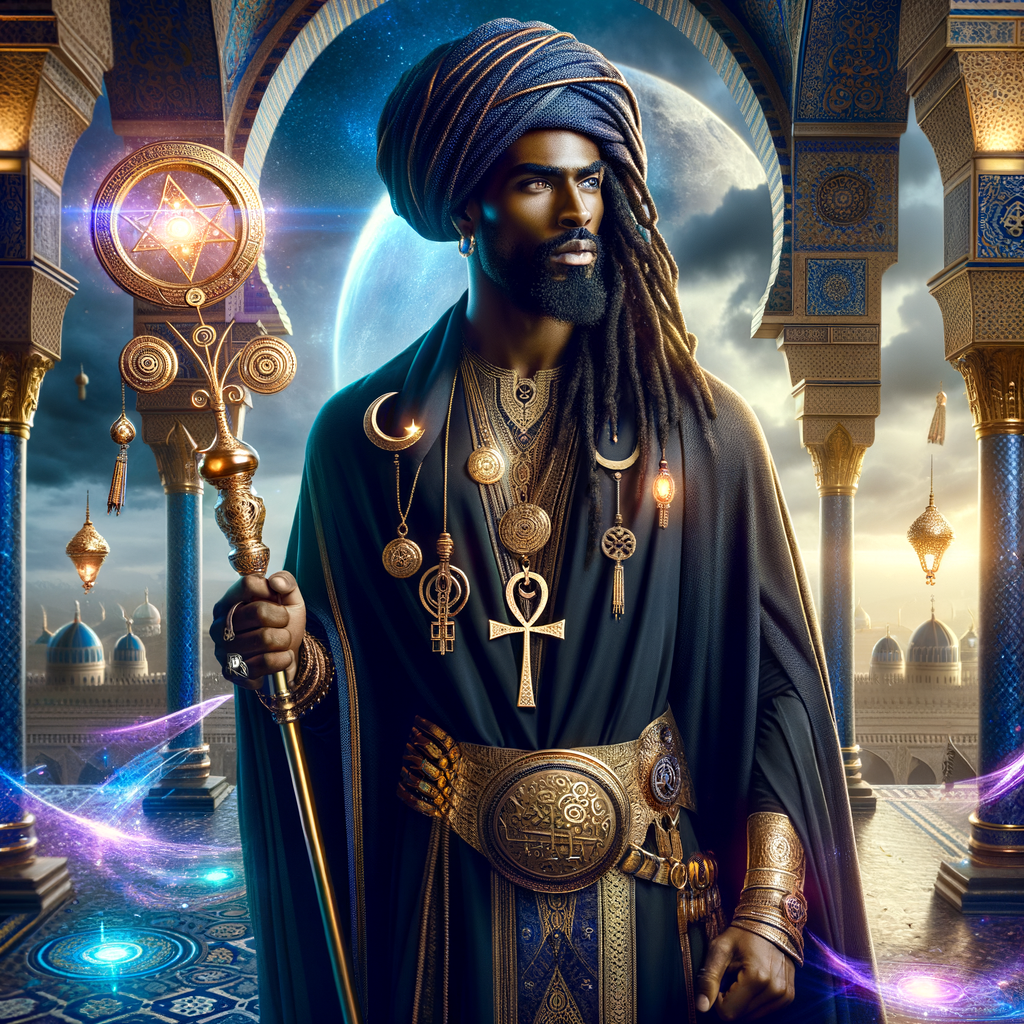
Conclusion
Ancient priests were not mere religious figures but master strategists, scientists, and magicians who intertwined spiritual authority with political power.
By controlling knowledge, influencing rulers, and safeguarding esoteric traditions through mystery schools. They shaped the course of civilizations.
Today, their modern counterparts operate across diverse fields, wielding influence over society through technology, media, finance, and culture.
Understanding their legacy offers profound insights into humanity’s eternal quest for power, enlightenment, and transcendence.
Learn the Secrets of Power Today
If you’re ready to ascend to a higher level of mastery and learn how to apply these timeless principles in modern life. Start by investing in the tools of the elite.
We recommend Easy Peasy AI for creating powerful content and strategies with cutting-edge technology.
Empower your voice, dominate your niche, and elevate your influence—just as the ancient priests mastered their realms.
Click here to claim an exclusive 30% recurring discount and begin your venture to harnessing the ultimate power of knowledge and technology.
Affiliate Disclaimer:
Primal Mogul may earn commissions from affiliate links at no extra cost to you. We only recommend products and services we trust and believe will benefit our audience. These earnings help support our mission to deliver valuable content and resources to ambitious leaders and entrepreneurs. Thank you for your support!
Primal Mogul Elite



















